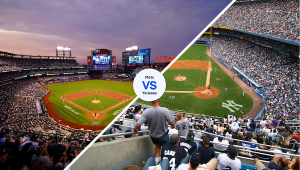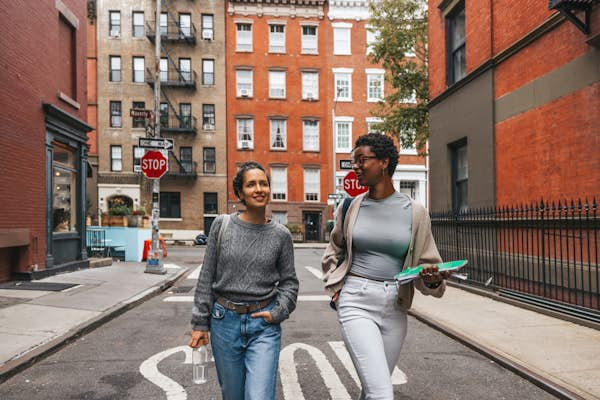
With more than 8 million people crammed into five boroughs spanning a mere 300 sq miles, New York City is a boisterous metropolis that famously refuses to sleep.
Its riot of sights and sounds vary so much from one block to the next – let alone from borough to borough – that you could take a month and visit a different part of town each day, and you’d still only scratch the surface.
Get local insight on destinations all over the world with our weekly newsletter delivered to your inbox.
Home to Times Square, Rockefeller Center, the Empire State Building and the Theater District, midtown is an obvious destination for first-time visitors, but don’t stop there – there’s a ton left to discover after you’ve crossed those spots off your list. Here are eight New York City neighborhoods you should make time to explore.
1. East Village and Lower East Side
Best neighborhood for restaurants
East of Third Ave, south of 14th St and north of Houston is the East Village, once celebrated for its gritty punk-rock scene but now better known for its trendy, upscale vibe – albeit one that retains a hint of an edge. It’s just harder to see it now, thanks to the plethora of restaurants, bars, shops, theaters and concert venues that have sprung up in the past decade or two.
St Mark’s Place is one of the main drags, and while it’s jammed with kitschy stores and cheap vendors in spots, there are also some real gems hiding in plain sight, especially as you travel further east toward Tompkins Square Park.
But really, no matter which block you stumble down, it’s hard to go wrong – you’re sure to find something tasty, whether it’s blintzes and pierogi from the legendary Veselka, a cardamom bun from La Cabra, a delicious bowl of Thai noodles from Soothr, or cheeseburger tacos and spicy cucumber margaritas from Empellón al Pastor at happy hour.
On the other side of Houston and stretching down toward Chinatown, the Lower East Side is a neighborhood molded by immigrants, and its history is a fascinating one best experienced at the Tenement Museum on Orchard Street. The New Museum and the International Center of Photography Museum are also nearby.
On Houston itself, two institutions nod to the area’s Jewish roots: Katz’s Delicatessen, equally beloved for its smoked pastrami and its appearance in the “I’ll have what she’s having” scene from When Harry Met Sally, and Russ & Daughters, an appetizing shop known for its caviar, knishes and smoked fish.
Further south on Orchard Street, Scarr’s Pizza grinds its own stone-milled flour to make the perfect unpretentious slice, while Dirt Candy on Allen St serves ultra-creative vegetarian food. To sample a little bit of everything, check out Essex Market and its subterranean food hall, the Market Line, which features vendors from around the neighborhood and across the city.
 Chelsea is home to a host of LGBTIQ+-owned establishments © Artem Vorobiev / Getty Images
Chelsea is home to a host of LGBTIQ+-owned establishments © Artem Vorobiev / Getty Images
2. Chelsea
Best neighborhood for LGBTIQ+ travelers
Historically, Greenwich Village has been a hub of LGBTIQ+ life in New York: its Stonewall Inn was the site of the 1969 riots that sparked the gay rights movement, and nearby Christopher Park was a popular hangout that saw huge crowds during the uprising.
Today the two are memorialized as a national historic landmark and a national park, respectively, but while the Village boasts other relevant spots like Julius’, one of the city’s oldest continually running gay bars, and Cubbyhole, one of its only lesbian bars, much of the community has migrated westward to Chelsea.
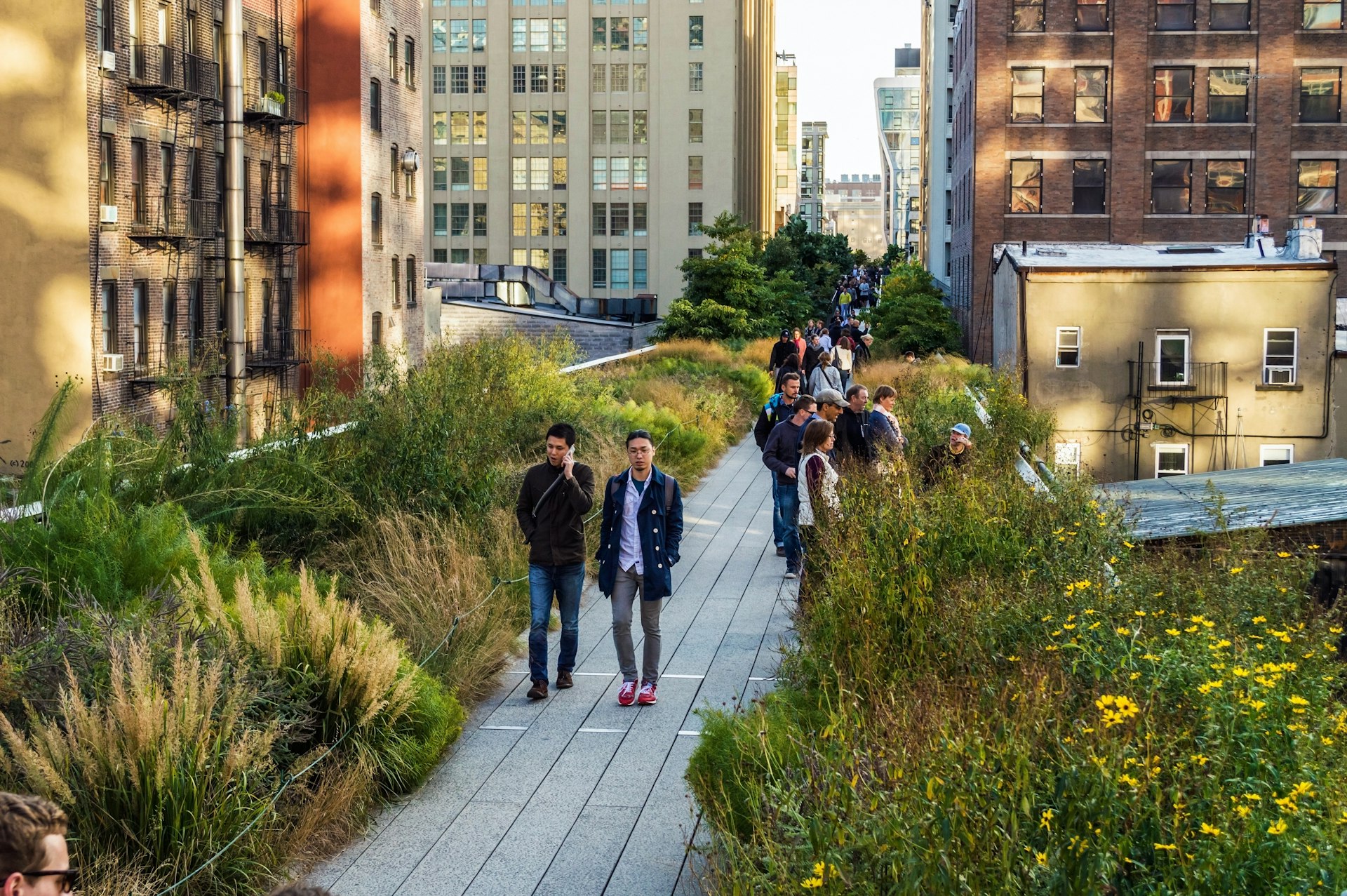 In Chelsea, get some fresh air with a stroll along the High Line © Andrew F. Kazmierski / Shutterstock
In Chelsea, get some fresh air with a stroll along the High Line © Andrew F. Kazmierski / Shutterstock
Spanning the blocks from 14th St to 23rd and Sixth Ave to the Hudson River, Chelsea is home to queer-owned and -run shops, galleries and restaurants, as well as gay bars galore. At Barracuda, you’ll find drag shows and 2-for-1 drinks; Rebar is a go-to for dancing and debauchery, and the Eagle hosts a leather scene unlike any other.
In between drinks, soak up some culture with a gallery hop (there are hundreds in the area, most of which are free) or a visit to the Rubin Museum of Art, and get some fresh air with a stroll along the High Line – a former railway turned elevated park, it offers a different perspective on the neighborhood.
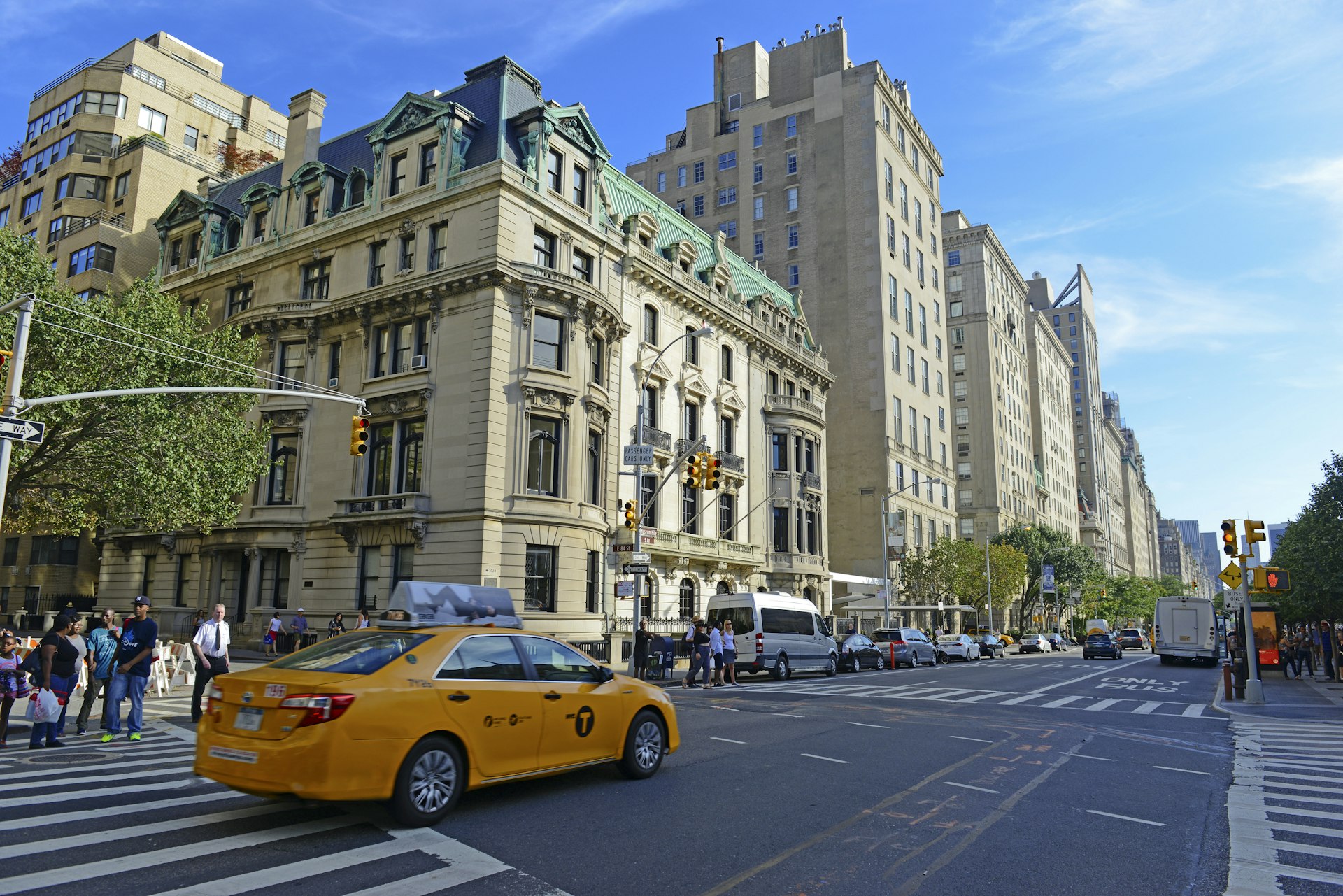 The Upper East Side is filled with luxury apartments and world-class museums © Robert Cicchetti / Shutterstock
The Upper East Side is filled with luxury apartments and world-class museums © Robert Cicchetti / Shutterstock
3. Upper East Side
Best neighborhood for museums
The Upper East Side is just minutes away from the scruffier downtown scene, but the neighborhood’s air of quiet sophistication makes it feel like a whole different city, from the well-kept buildings to the (relatively) peaceful tree-lined streets.
It’s a mix of bank accounts, with Michelin-starred restaurants and fancy cocktail bars butting up against burger joints and divey sports bars; moneyed families, young professionals and blue-collar workers sharing sidewalk space; and upscale boutiques facing nationally known chains.
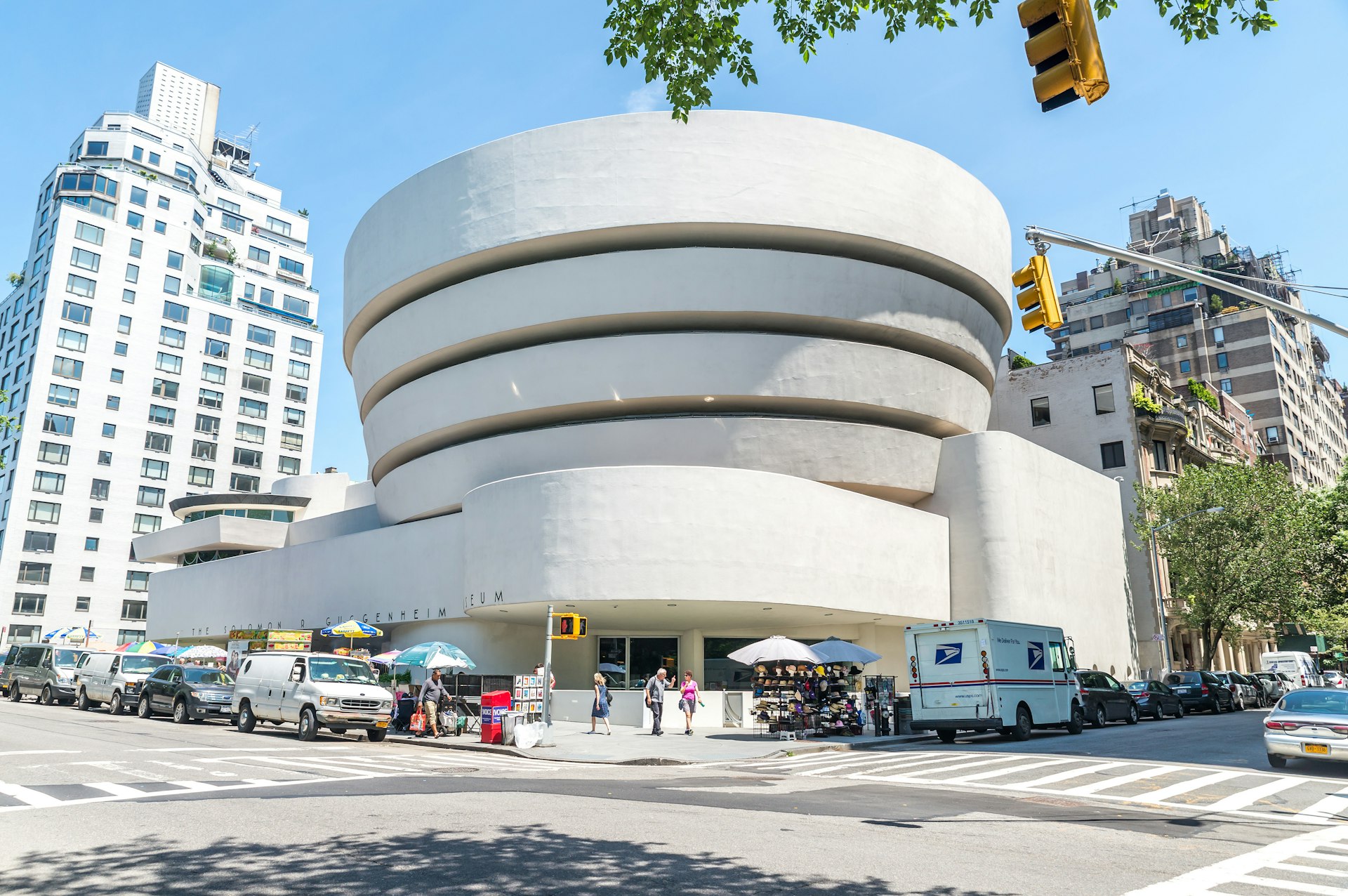 The Guggenheim is one of several spots on Museum Mile © Alexander Prokopenko / Shutterstock
The Guggenheim is one of several spots on Museum Mile © Alexander Prokopenko / Shutterstock
While the amenities are plentiful, museums are a main attraction here: the area boasts the highest concentration of cultural institutions in the city. In the shadow of Central Park, Fifth Ave’s Museum Mile stretches from 82nd St and the Metropolitan Museum of Art to the lesser-known El Museo del Barrio at 104th; in between, there’s the Jewish Museum, the Museum of the City of New York, the Guggenheim and the Cooper-Hewitt Smithsonian Design Museum, among others.
To the east is the Asia Society & Museum on Park Ave, and on Madison Ave, you’ll find the temporarily relocated Frick Collection; further south at Columbus Circle (technically in midtown but still within walking distance), there’s the Museum of Arts and Design, and a few blocks further is the Museum of Modern Art, which reopened in late 2019 after a $450 million renovation and expansion.
 You can easily eat well in Chinatown without breaking the bank © Michal Stipek / Getty Images
You can easily eat well in Chinatown without breaking the bank © Michal Stipek / Getty Images
4. Chinatown
Best neighborhood for budget travelers
Bordered by Little Italy and the Lower East Side, Chinatown is like no other place in the city, with heavily trafficked streets and sidewalks packed with fruit-and-vegetable stands, vendors pushing designer knock-offs and swarms of people in every direction.
The options for accommodations are limited – the Hotel 50 Bowery is a boutique property with a great rooftop bar, the Leon Hotel has views of the Manhattan Bridge, and there’s a Best Western and a Wyndham Garden in the vicinity as well as a handful of Airbnbs. But you’ll have no problems sticking to a budget otherwise, thanks to the inexpensive souvenir shops and, most importantly, the inexpensive dining options.
From dim sum parlors to pho joints to hotpot spots to ice cream shops, bakeries selling sesame balls, custard tarts and pork buns to holes-in-the-wall slinging hand-pulled noodles, thin-skinned dumplings and crisp-skinned roast duck, you can easily eat well here without breaking the bank. Just be sure to bring cash, as many places in the neighborhood won’t take cards.
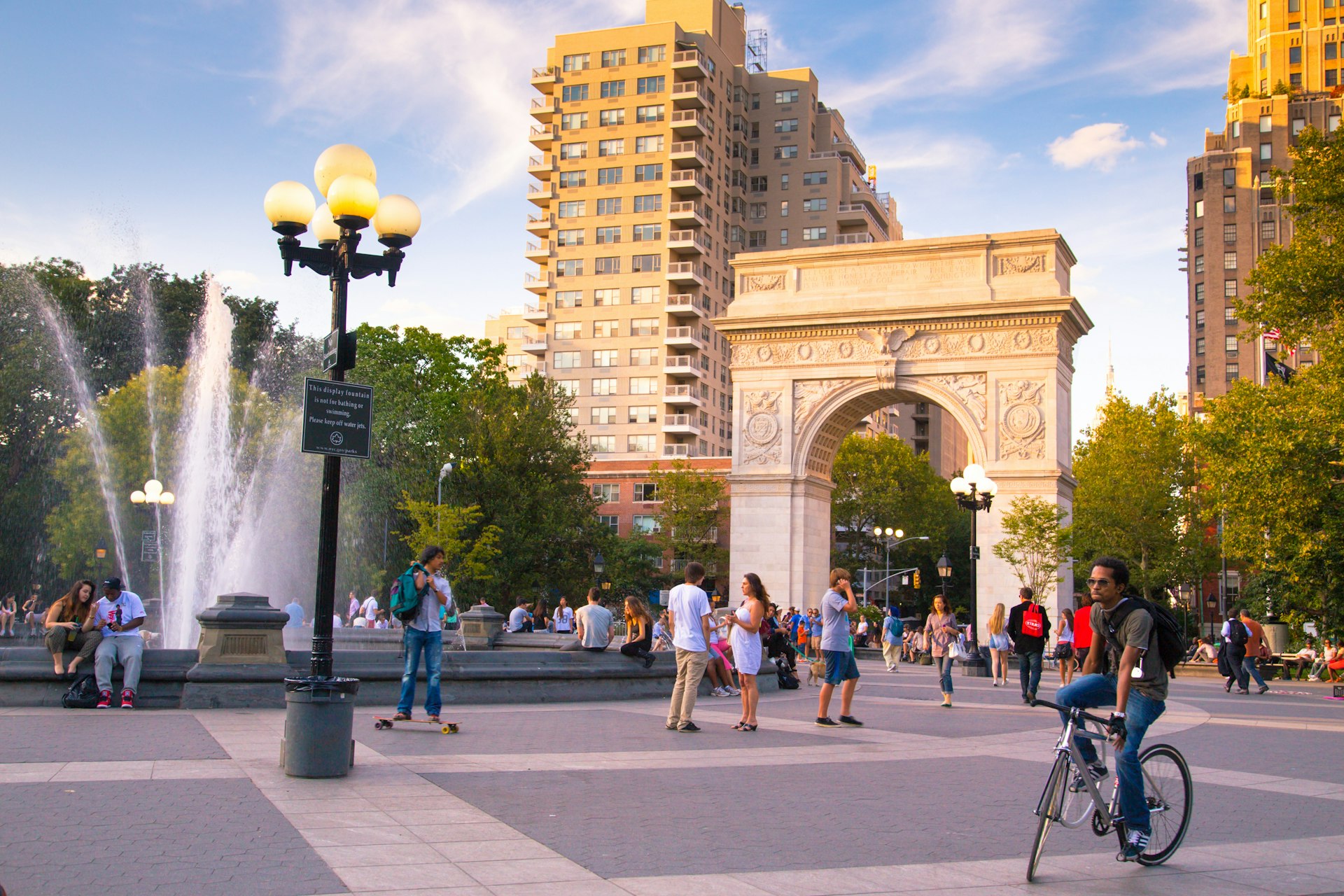 Greenwich Village and the West Village are best seen on foot © littleny / Shutterstock
Greenwich Village and the West Village are best seen on foot © littleny / Shutterstock
5. Greenwich Village and West Village
Best neighborhood for pretending to be on a film set
New York has been memorialized on film innumerable times, but one neighborhood seems to star more frequently than anywhere else in the city: Greenwich Village. And given its quaint, shady blocks, well-maintained brownstones and chic boutiques, bars and restaurants, not to mention its (often beautiful, often wealthy) residents, it’s easy to see why so many fictional characters have been made to live here.
The neighborhood is best seen on foot, so grab a latte from one of the many local coffee shops, put on your best paparazzi-repelling sunglasses and prepare to lose yourself in the picturesque streets.
Follow the tour buses to 64 Perry St, which served as the facade for Carrie Bradshaw’s apartment on Sex and the City, then walk a few blocks south to 90 Bedford St, where you’ll find the Friends apartment; further east, Mad Men’s Don Draper kept an apartment at 104 Waverly Pl, by Washington Square Park.
The park itself is a celluloid stalwart too, appearing in films from Ghostbusters II to Inside Llewyn Davis, and a celebrity favorite too – none other than David Bowie called it his favorite place in New York.
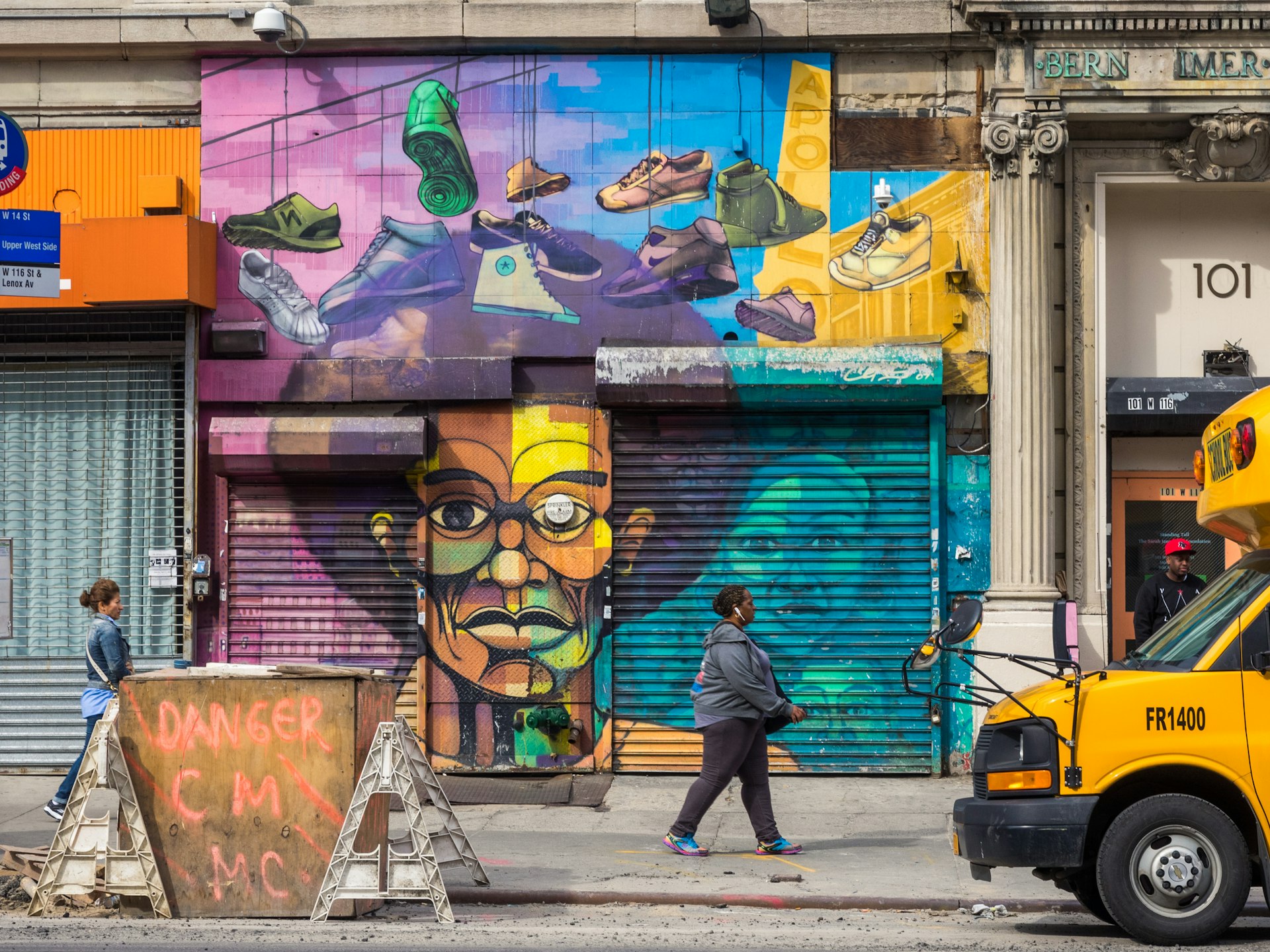 Harlem is the epicenter of Black culture © Robert Mix / 500px
Harlem is the epicenter of Black culture © Robert Mix / 500px
6. Harlem
Best neighborhood for Black culture
Harlem has been the epicenter of Black culture in America since the early 1900s, but the neighborhood really came into its own in the 1920s, when the Harlem Renaissance kicked off a decade of unparalleled artistic expression.
From music and literature to art and dance, luminaries including Marcus Garvey, Langston Hughes, Louis Armstrong, Zora Neale Hurston and Josephine Baker took the spotlight, laying the groundwork for the Civil Rights movement and paving the way for future creatives like James Baldwin, Maya Angelou, Miles Davis, Charlie “Bird” Parker and Dizzy Gillespie to take the stage.
Today, those interested in the neighborhood’s history have plenty of options. At the New York Public Library’s Schomburg Center for Research in Black Culture, selections from the personal collections of prominent artists and activists are available to the public, while the National Jazz Museum pays tribute to the genre’s past and present.
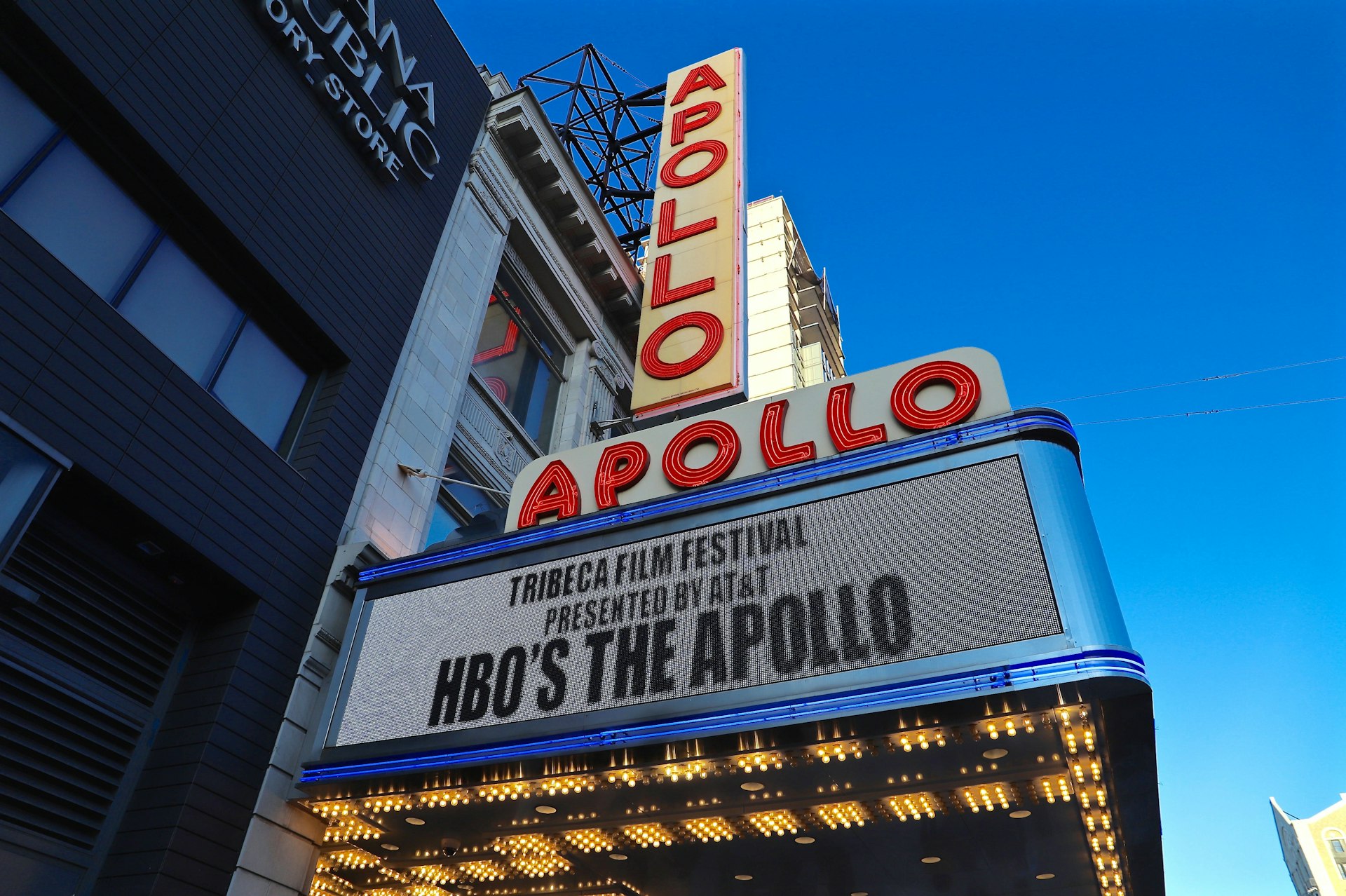 The Apollo remains a popular destination in Harlem © Chie Inoue / Shutterstock
The Apollo remains a popular destination in Harlem © Chie Inoue / Shutterstock
Langston Hughes’s former home on East 127th St has been listed on the National Register of Historic Places since 1982, and the Sugar Hill Children’s Museum of Art & Storytelling offers workshops and programs to keep the little ones entertained.
You can also spend an evening at Minton’s Playhouse, where jazz greats from Miles, Bird and Dizzy to Duke Ellington, Ella Fitzgerald and Billie Holiday once performed, or opt for something a bit more modern and hit the iconic Apollo Theater for amateur night, tours and exhibits on subjects like sneaker culture and Black cinema. Sylvia’s Restaurant is renowned for its soul food, while Marcus Samuelsson’s Red Rooster Harlem puts a modern spin on classic comfort fare.
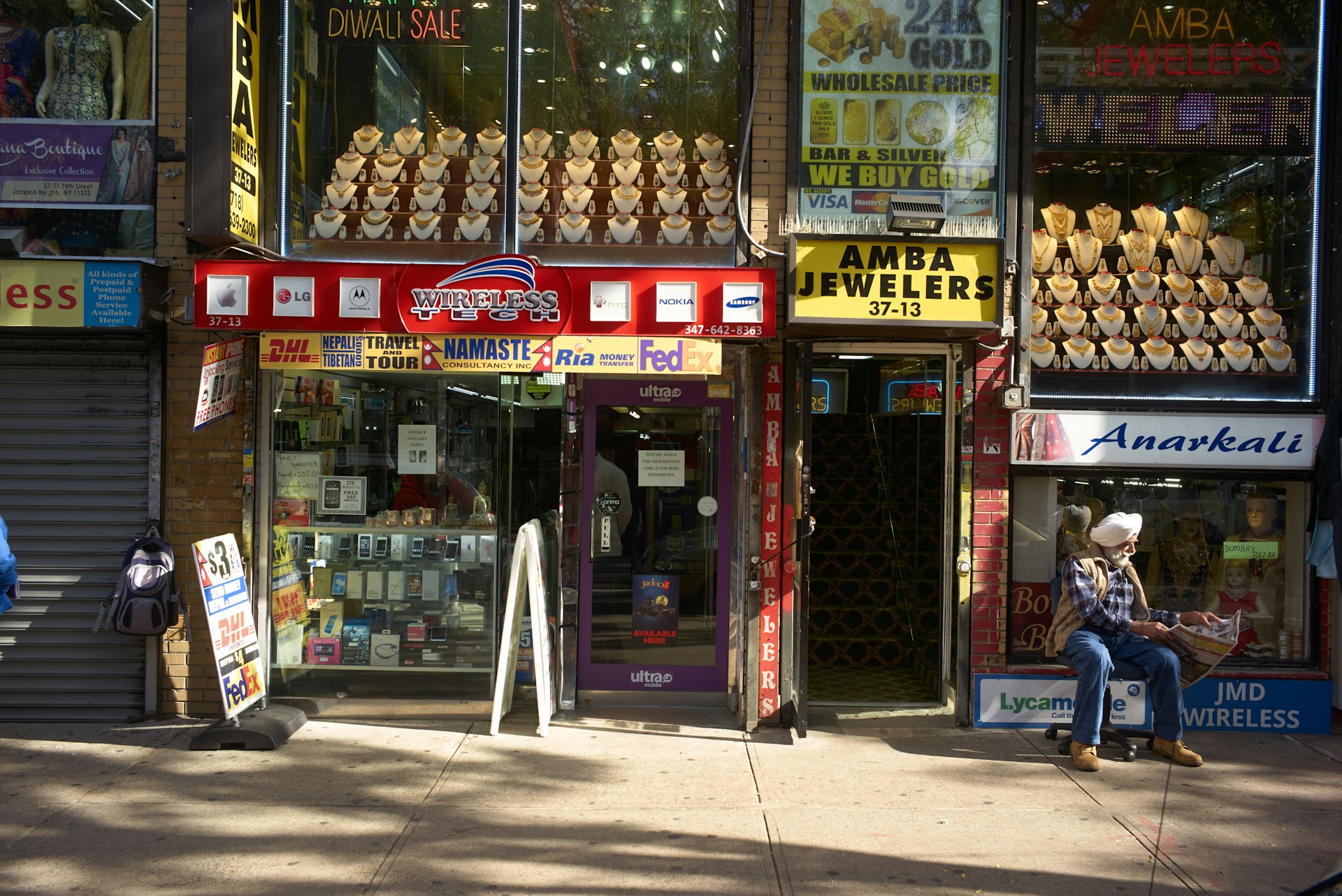 Jackson Heights is considered one of the most diverse neighborhoods in NYC © Gus Powell / NYC & Company
Jackson Heights is considered one of the most diverse neighborhoods in NYC © Gus Powell / NYC & Company
7. Jackson Heights, Queens
Best neighborhood for traveling internationally without a passport
Located in north-central Queens just a short train ride from midtown Manhattan, Jackson Heights is said to be the most diverse part of New York: Some 60% of the neighborhood’s 180,000 residents were born outside the US, and 167 languages are reportedly spoken here.
The area is primarily Latino, with representation from Mexico, Colombia, Peru and Bolivia, and South Asian, with transplants from Nepal and Tibet as well as India, Pakistan and Bangladesh. Jackson Heights also has one of New York’s biggest LGBTIQ+ communities, and it plays host to the New Queens Pride Parade each June.
Roosevelt Ave is a bit down-at-the-heels, but its lineup of Tibetan, North Indian and Colombian fare makes it well worth a stroll, as does its assortment of stellar taquerias. But to get a real feel for the neighborhood vibe, head north to family-oriented 37th Ave, where you’ll find dosas and arepas alongside Uruguayan sweets and Brazilian boutiques, among other mom-and-pop shops.
 Bushwick is full of stylish spots to drink, dance or see a show © Christian Mueller / Shutterstock
Bushwick is full of stylish spots to drink, dance or see a show © Christian Mueller / Shutterstock
8. Williamsburg and Bushwick
Best neighborhood for live music
The hipster haven of Williamsburg isn’t exactly an under-the-radar destination – it’s been luring people across the East River for decades now, and its appeal has yet to diminish. The neighborhood is peppered with stylish boutiques and eateries, and its music scene is one of the best in town.
On North 6th St, indie favorites take the stage at the Music Hall of Williamsburg, while a few doors down, the innovative performance space National Sawdust provides an intimate setting for a diverse range of talent, from string quartets and experimental artists to established stars like David Byrne and Liz Phair.
On Metropolitan Ave, there’s the Brooklyn outpost of the Knitting Factory, and on Bedford Ave is the Williamsburg Music Center, a Black-owned jazz club that’s been around since 1981 – practically an eternity in New York’s ever-shifting nightlife landscape.
If Williamsburg is the elder statesman, Bushwick to the east is the young up-and-comer, full of stylish spots (often former warehouses) to drink, dance, see a show or simply mingle with the good-looking crowds. To tear it up on the dance floor, hit Jupiter Disco, Lot 45, Mood Ring or the Bossa Nova Civic Club; to catch your favorite band, try Elsewhere, Alphaville or Market Hotel.



